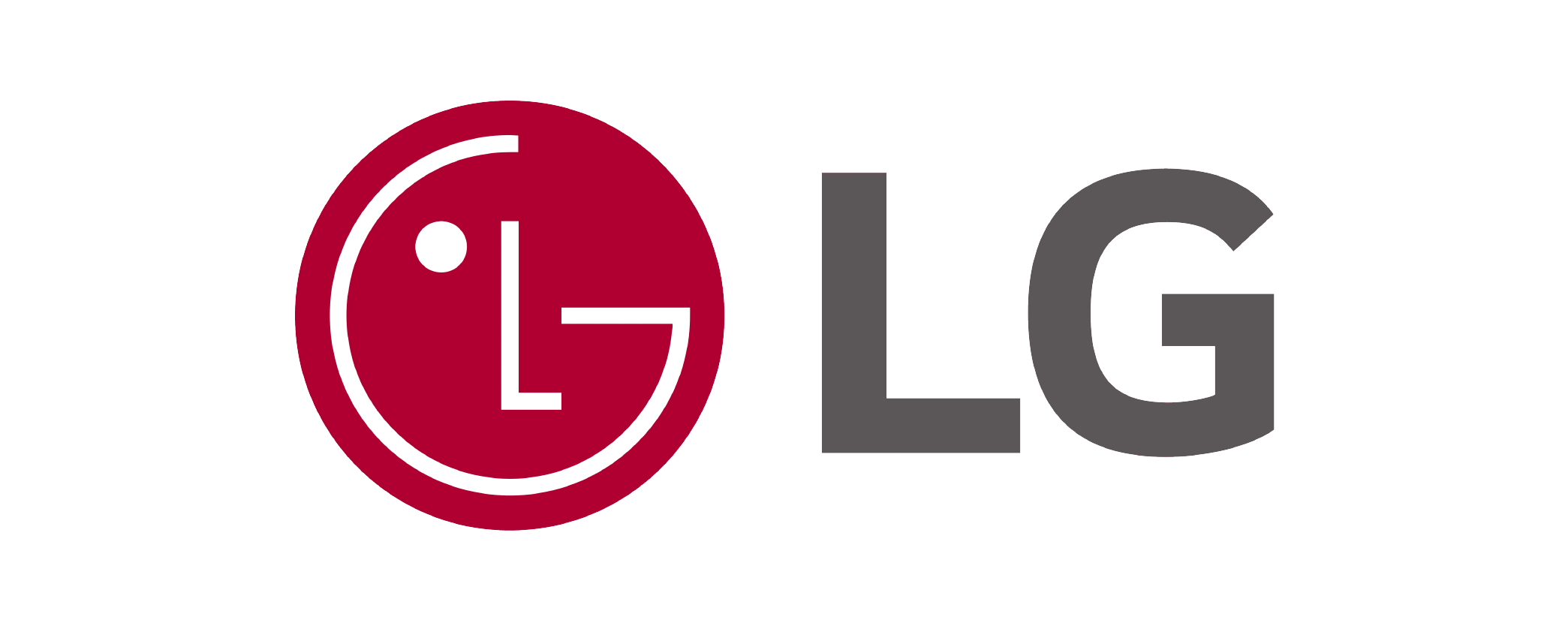The global Solar-Powered EV Chargers Market size was valued at USD 3.5 Billion in 2024 and is projected to expand at a compound annual growth rate (CAGR) of 25% during the forecast period, reaching a value of USD 16 Billion by 2032.
The "Solar-Powered EV Chargers Market Research Report" from Future Data Stats offers a comprehensive analysis of the Market landscape, leveraging historical data from 2021 to 2023 to highlight significant trends and growth patterns. With 2024 as a baseline year, the report examines consumer behaviors, competitive dynamics, and regulatory influences shaping the industry. Going beyond basic analysis, it provides a well-researched forecast for 2025 to 2033. Utilizing advanced data analysis techniques, the report outlines the Market's growth path, identifies emerging opportunities, and anticipates potential challenges, equipping stakeholders with essential insights to navigate the evolving Market environment effectively.
MARKET OVERVIEW:
The Solar-Powered EV Chargers Market aims to provide clean, renewable energy solutions for electric vehicle charging. It focuses on reducing reliance on traditional electricity sources by harnessing solar power, making EV charging more sustainable and cost-effective. This market supports the global shift toward greener transportation by enabling widespread access to eco-friendly charging infrastructure. It also seeks to address the growing demand for convenient and reliable EV charging options across residential, commercial, and public sectors. By integrating solar technology, the market promotes energy independence, lowers carbon emissions, and helps users save on electricity costs while advancing the adoption of electric vehicles worldwide.
MARKET DYNAMICS:
The Solar-Powered EV Chargers Market currently embraces trends that prioritize efficiency and user convenience. Manufacturers innovate by developing lightweight, portable chargers and integrating smart technology for real-time monitoring and optimization. Hybrid systems that combine solar energy with grid power or battery storage gain popularity, ensuring consistent charging even when sunlight is limited. These advancements help expand the adoption of solar-powered charging solutions across diverse applications and regions. Looking ahead, the market shows promising business opportunities as governments worldwide push for cleaner energy and stricter emissions regulations. Expansion into emerging economies and rural areas opens new demand channels, especially through off-grid and affordable solar charging units. Companies that invest in scalable, flexible technologies and forge partnerships with automakers and energy providers will capitalize on the growing shift toward sustainable transportation. The business scope broadens with increasing EV sales and the urgent need for eco-friendly infrastructure.
Solar-powered chargers provide a clean energy source, reducing reliance on traditional electricity grids. Additionally, government incentives and policies promoting renewable energy adoption further bolster market expansion. Companies are actively investing in innovative technologies to enhance the efficiency and accessibility of these charging stations. However, the market also faces certain challenges. High initial installation costs can deter potential users, and the variability of solar energy generation may limit charger reliability in certain regions. Despite these constraints, numerous opportunities exist. As battery technology improves and solar panel efficiency increases, the viability of solar-powered chargers will likely enhance. Collaborations between automakers and energy providers can create integrated solutions, making solar EV charging more appealing to consumers. By addressing these challenges, stakeholders can capitalize on the growing trend towards sustainable transportation.
SOLAR-POWERED EV CHARGERS MARKET EGMENTATION ANALYSIS
BY TYPE:
Portable solar-powered EV chargers offer unmatched flexibility, allowing users to charge vehicles wherever sunlight is available. This segment thrives on mobility, appealing to travelers and remote area residents who lack fixed infrastructure. Manufacturers innovate continuously, improving panel efficiency and reducing device weight, which enhances user convenience and expands market reach. The increasing popularity of electric vehicles, combined with advances in portable solar technology, propels this segment’s growth as it provides a practical solution for on-the-go charging needs. Fixed solar-powered EV chargers serve as a critical part of urban and suburban infrastructure, delivering stable, high-capacity power for regular EV users. Businesses, residential complexes, and public entities adopt fixed chargers to meet rising demand for dependable and environmentally friendly charging solutions. The ability to install larger solar arrays and integrate energy storage and smart controls boosts their appeal. Regulatory support and incentives encourage investments, making fixed solar chargers a preferred choice in developed markets with strong EV penetration.
Hybrid solar-powered EV chargers blend solar energy with grid power or battery storage to guarantee uninterrupted charging regardless of weather or time. This combination reduces reliance on grid electricity, cuts costs, and enhances system resilience. Operators, especially commercial fleets and public charging stations, favor hybrid systems for their flexibility and reliability. Ongoing advancements in battery technology and energy management systems drive adoption, positioning hybrid chargers as a key innovation in the quest for sustainable, efficient EV infrastructure.
BY APPLICATION:
Residential solar-powered EV chargers empower homeowners to harness renewable energy for daily vehicle charging, lowering electricity bills and supporting sustainability. Increasing awareness of climate change and government subsidies motivate residential users to install these systems. The integration with existing rooftop solar panels and smart home energy management amplifies their appeal. As more consumers switch to electric vehicles, residential solar charging grows steadily, transforming homes into energy hubs that contribute to decentralized power generation. Commercial applications attract businesses aiming to reduce operational expenses and enhance green credentials through solar EV chargers. Corporations deploy these systems in office parking lots, shopping centers, and hospitality venues to support employees and customers with eco-friendly amenities. Incentives and regulations further encourage adoption, helping companies comply with environmental mandates while boosting brand reputation. The commercial segment’s expansion accelerates as businesses recognize solar charging as a strategic investment that aligns economic benefits with sustainability goals.
Public charging stations rely increasingly on solar-powered systems to expand infrastructure while minimizing environmental impacts. Municipalities and private operators install solar chargers at convenient locations such as shopping areas, transit hubs, and city streets. Solar integration cuts operational costs and greenhouse gas emissions, supporting urban clean energy targets. The ability to provide accessible, renewable-powered EV charging promotes widespread adoption of electric mobility. Governments actively support this segment through funding and policies, driving rapid growth in public solar charging networks.
BY CHARGING CAPACITY:
Low capacity solar-powered EV chargers meet the needs of users who require slow, cost-effective charging solutions suitable for overnight vehicle replenishment. These chargers, typically rated up to 3.7 kW, appeal mainly to residential customers and small businesses with modest daily mileage demands. Their affordability and simpler installation make them accessible for a broad user base. Despite slower charging speeds, they adequately cover many driving patterns and contribute to sustainable energy consumption at a manageable cost. Medium capacity chargers, ranging from 3.7 kW to 22 kW, strike a balance between charging speed and affordability, serving a wide variety of applications including workplaces and commercial parking lots. This segment experiences robust growth as it supports users seeking quicker charging without the infrastructure demands of high-capacity stations. Medium capacity solar chargers also benefit from moderate solar panel requirements and compatibility with existing electrical systems, making them a versatile option for expanding EV infrastructure efficiently.
High capacity solar-powered chargers, delivering above 22 kW, cater to fast charging needs critical for commercial fleets, public stations, and high-usage vehicles. These chargers enable rapid replenishment, reducing vehicle downtime and supporting intensive use cases like logistics and ride-sharing. Although more expensive and complex to install, their operational benefits justify investment. Integration with hybrid systems often ensures consistent power supply despite solar variability. The shift toward heavy-duty and commercial EV electrification fuels demand for these powerful solar chargers.
BY END USER:
Individual EV owners embrace solar-powered chargers to reduce energy costs and gain independence from grid fluctuations. They prefer residential and portable units that combine convenience with environmental benefits. This group increasingly adopts solar charging as part of broader home sustainability efforts, supported by subsidies and technological improvements. Growing awareness of carbon footprints drives these users to install solar solutions that align with their values and lifestyle, fostering steady market expansion. Commercial fleet operators lead the adoption of solar-powered EV chargers by focusing on cost reduction and sustainability. They implement hybrid and fixed solar charging systems to power large vehicle fleets efficiently and reliably. Fleet managers optimize charging schedules with smart technologies to maximize solar usage and minimize grid dependency. The need to meet environmental regulations and reduce operational expenses motivates this segment’s aggressive investments in solar EV infrastructure, positioning it as a cornerstone of green fleet management.
Municipalities invest in solar-powered EV chargers to promote public sustainability and comply with environmental mandates. These entities deploy solar charging infrastructure in public parking areas, government vehicle fleets, and community programs to showcase commitment to clean energy. Municipal projects often attract funding and incentives, accelerating infrastructure rollout. Prioritizing reliability and accessibility, municipalities contribute significantly to expanding solar EV charging networks, supporting city-wide emission reduction targets. EV charging service providers incorporate solar power to differentiate offerings and align with growing demand for green solutions. They install solar-powered chargers across commercial and public sites, leveraging hybrid technologies to guarantee consistent service. Solar integration helps reduce operating costs and enhances corporate sustainability profiles. As market competition intensifies, service providers increasingly adopt solar to attract eco-conscious customers and comply with regulatory pressures, fueling rapid market growth.
BY INSTALLATION TYPE:
On-grid solar EV chargers connect directly to the electrical grid, balancing solar power generation with grid electricity to ensure reliable, continuous charging. Users benefit from feeding surplus solar energy back into the grid, which can generate credits or revenue. This installation type suits urban and commercial locations with stable grid access. On-grid chargers integrate with smart grid systems to optimize energy use and reduce operational costs. The ability to switch seamlessly between solar and grid power makes this model highly practical for large-scale deployments.
Off-grid solar EV chargers operate independently from the grid, relying solely on solar panels and energy storage. They provide critical solutions for rural, remote, and underserved areas lacking grid infrastructure or facing unreliable electricity supply. Advances in battery and solar technology enable off-grid chargers to deliver consistent power despite environmental variability. Their autonomy enhances energy security and supports broader EV adoption in regions previously excluded from traditional charging networks. Off-grid solutions promote decentralized energy and align with sustainability objectives.
BY CHARGING MODE:
AC charging dominates due to its compatibility with most electric vehicles and affordability. Solar-powered AC chargers convert alternating current from solar panels or the grid to safely charge EV batteries. They support a wide range of applications from residential to commercial environments, especially where slow to medium-speed charging meets user needs. Their relative simplicity and cost-effectiveness make AC chargers the most widely deployed mode in the solar EV market. They provide dependable, efficient charging aligned with everyday vehicle use.
DC charging offers high-power, rapid charging essential for public stations and commercial fleets requiring fast vehicle turnaround. Solar-powered DC chargers require sophisticated electronics to manage variable solar input and maintain consistent direct current output. These chargers significantly reduce charging times, supporting intensive vehicle usage scenarios. While more expensive to install and operate, DC charging’s speed and efficiency appeal to growing segments demanding fast, reliable service. Innovations in integrating solar with DC charging advance the viability of renewable-powered fast charging.
REGIONAL ANALYSIS:
North America leads the Solar-Powered EV Chargers Market through strong government incentives and increasing electric vehicle adoption. The United States and Canada drive demand by investing heavily in renewable energy infrastructure and encouraging businesses and homeowners to install solar charging systems. Technological innovation and expanding public charging networks further boost market growth. The region’s focus on reducing carbon emissions and enhancing energy independence shapes the development of reliable and efficient solar-powered EV chargers.
Europe follows closely with ambitious climate goals and well-established renewable energy sectors fueling market expansion. Countries like Germany, France, and the UK actively promote solar EV chargers by offering subsidies and integrating them into smart grid systems. Asia Pacific experiences rapid growth, driven by China and India’s large-scale investments in solar and EV infrastructure. Latin America and the Middle East & Africa grow steadily as they leverage abundant solar resources and implement supportive policies to increase EV accessibility in urban and rural areas. These regions focus on off-grid and hybrid solutions to overcome grid limitations and meet rising demand for clean transportation.
MERGERS & ACQUISITIONS:
- In Jan 2024: Beam Global acquired a rival solar EV charger firm to expand its market share in North America.
- In Feb 2024: Enphase Energy partnered with a leading EV charging company to integrate solar-powered charging solutions.
- In Mar 2024: SunPower announced a new solar-powered EV charger line, targeting residential and commercial markets.
- In Apr 2024: ChargePoint merged with a solar energy startup to enhance its renewable charging infrastructure.
- In May 2024: Tesla launched a new solar-integrated Supercharger station pilot program in California.
- In Jun 2024: ENGIE acquired a solar EV charging network in Europe to strengthen its clean mobility offerings.
- In Jul 2024: Shell Renewables invested in a solar-powered EV charging startup to expand its green energy portfolio.
- In Aug 2024: ABB partnered with a solar tech firm to develop hybrid EV charging stations.
- In Sep 2024: Blink Charging announced a joint venture with a solar panel manufacturer for off-grid EV charging solutions.
- In Oct 2024: Siemens acquired a solar EV charging company to boost its eMobility division.
- In Nov 2024: Sunrun expanded its solar-powered EV charging services to new U.S. markets.
- In Dec 2024: TotalEnergies merged with a solar EV charging infrastructure provider to accelerate its renewable energy transition.
KEY MARKET PLAYERS:
- Beam Global
- Enphase Energy
- SunPower
- ChargePoint
- Tesla
- ENGIE
- Shell Renewables
- ABB
- Blink Charging
- Siemens
- Sunrun
- TotalEnergies
- EVBox
- Wallbox
- SolarEdge
- Emporia Energy
- Dcbel
- myenergi (Zappi)
- EO Charging
- Virta
Solar-Powered EV Chargers Market Table of Contents
Introduction
Market Overview
Market Dynamics
- Drivers
- Restraints
- Opportunities
- Challenges
Market Segmentation
- By Type
- By Application
- By Charging Capacity
- By End User
- By Installation Type
- By Charging Mode
Regional Analysis
- North America
- Europe
- Asia-Pacific
- Middle East & Africa
- Latin America
Competitive Landscape
Key Market Trends
Future Outlook
Conclusion
Solar-Powered EV Chargers Market Segmentation
By Type:
- Portable Solar-Powered EV Chargers
- Fixed Solar-Powered EV Chargers
- Hybrid Solar-Powered EV Chargers
By Application:
- Residential
- Commercial
- Public Charging Stations
- Fleet Charging
By Charging Capacity:
- Low Capacity (up to 3.7 kW)
- Medium Capacity (3.7 kW to 22 kW)
- High Capacity (above 22 kW)
By End User:
- Individual EV Owners
- Commercial Fleet Operators
- Municipalities
- EV Charging Service Providers
By Installation Type:
- On-grid Solar EV Chargers
- Off-grid Solar EV Chargers
By Charging Mode:
- AC Charging
- DC Charging
By Geography:
- North America (USA, Canada, Mexico)
- Europe (UK, Germany, France, Italy, Spain, Rest of Europe)
- Asia-Pacific (China, Japan, Australia, South Korea, India, Rest of Asia-Pacific)
- South America (Brazil, Argentina, Rest of South America)
- Middle East and Africa (GCC Countries, South Africa, Rest of MEA)
WHY SHOULD YOU INVEST IN A MARKET RESEARCH REPORT?
Smarter Business Decisions:
A high-quality market research report delivers valuable insights into industry trends, customer preferences, and competitor strategies. With solid data guiding your choices, you can minimize risks and confidently pursue new opportunities—whether launching a product or expanding into new markets.
Spot Hidden Opportunities:
Market research uncovers unmet customer needs and emerging trends before they become mainstream. By aligning your products or services with these opportunities, you can stay ahead of the competition and capture untapped demand.
Know Your Competition Inside Out:
Gain a clear picture of your competitors' strengths, weaknesses, and strategies. This knowledge helps you refine your unique selling points, craft stronger positioning, and outmaneuver rivals effectively.
Sharper, More Effective Marketing:
Understanding your audience is key to successful marketing. Market research reveals who your customers are, what drives their decisions, and how they engage with brands. With these insights, you can create tailored campaigns that deliver better results and higher ROI.
Reduce Risks Before They Arise:
Every business move carries some risk—but research helps you anticipate challenges before they become costly. By analyzing market conditions and potential obstacles, you can make proactive adjustments to protect your bottom line and reputation.
Strengthen Your Case for Funding:
Investors and lenders want proof of market potential before backing a business. A well-researched report provides the data-driven evidence they need, boosting your credibility and increasing your chances of securing capital.
Stay Ahead of Industry Shifts:
Markets evolve fast, with new technologies, regulations, and consumer behaviors constantly reshaping the landscape. Regular market research ensures you stay informed, adapt quickly, and maintain a competitive edge in your industry.
RESEARCH METHODOLOGY AT FUTURE DATA STATS
At Future Data Stats, we combine decades of industry expertise with cutting-edge research techniques to deliver unparalleled market intelligence. Our team of seasoned analysts employs a dynamic, data-driven approach to uncover actionable insights, helping businesses navigate complex market landscapes with confidence.
Comprehensive & Cutting-Edge Market Analysis
We go beyond surface-level trends to provide a 360-degree view of market dynamics. Our research methodology is designed to:
✔ Accurately assess market size, growth patterns, and competitive landscapes.
✔ Identify emerging opportunities through real-time trend analysis and predictive modeling.
✔ Validate findings with high-quality data, expert consultations, and independent verification.
Our insights empower decision-makers with strategic clarity, ensuring they stay ahead in rapidly evolving industries.
Multi-Source Data Collection & Validation
We leverage a diverse mix of primary and secondary research sources, including:
- In-depth stakeholder interviews (industry leaders, suppliers, distributors, and end-users)
- Statistical databases & market reports from authoritative global sources
- Regional market intelligence to capture localized trends and demand shifts
- Proprietary analytical models tailored to specific industry needs
- By cross-verifying data from multiple streams, we ensure maximum accuracy and reliability.
Key Advantages of Our Research Approach
- Actionable Intelligence – Clear, data-backed recommendations for strategic planning.
- Technology-Enhanced Accuracy – Advanced tools for data validation and trend forecasting.
- Unbiased Insights – Independent analysis free from external influence.
Our Two-Tier Research Framework
- Primary Research – Direct Industry Engagement
- Expert Interviews: Over 25+ hours of discussions with key stakeholders across the value chain.
- Targeted Surveys: Structured questionnaires for KOLs (Key Opinion Leaders) to gauge market sentiment.
- Competitive Benchmarking: Assessing leading players to determine market positioning.
- Secondary Research – Extensive Data Synthesis
- Analysis of 3,000+ documents, including industry reports, whitepapers, and regulatory publications.
- Global & regional data mining from government databases, trade journals, and financial reports.
- Macroeconomic & sector-specific trend mapping for long-term forecasting.
Dual Analytical Approach
We employ both top-down and bottom-up methodologies to ensure precision:
- Bottom-Up Analysis: Calculating market size from granular data, ensuring detailed accuracy.
- Top-Down Assessment: Validating findings through macroeconomic indicators and industry benchmarks.
Why Choose Future Data Stats?
✔ 70+ years of collective expertise in market intelligence.
✔ Customized research models for sector-specific accuracy.
✔ Transparent, reliable, and forward-thinking insights.
With Future Data Stats, you don’t just get data—you get a strategic advantage. Partner with us to unlock the full potential of your market decisions.
Solar-Powered EV Chargers Market Dynamic Factors
Drivers:
- Increase demand for clean energy solutions
- Governments promote renewable energy incentives
- Rising electric vehicle adoption
- Need for off-grid charging solutions
- Reduction in solar panel costs
Restraints:
- High initial installation costs
- Limited sunlight in some regions
- Complex integration with existing grids
- Maintenance challenges in harsh environments
- Battery storage limitations
Opportunities:
- Expanding EV infrastructure in emerging markets
- Advances in solar technology efficiency
- Growing commercial fleet electrification
- Development of smart charging systems
- Collaboration with utility providers
Challenges:
- Regulatory hurdles and policy inconsistency
- Intermittent solar power availability
- Competition from conventional charging stations
- Technical issues in system scalability
- Consumer awareness and acceptance
Solar-Powered EV Chargers Market Regional Key Trends Analysis
North America:
- Adoption of solar-integrated smart chargers
- Increasing public-private partnerships
- Growth in residential solar EV charger installations
Europe:
- Strong government mandates for renewable EV charging
- Expansion of solar charging networks in urban areas
- Focus on off-grid solar EV chargers for rural zones
Asia-Pacific:
- Rapid EV market growth driving solar charger demand
- Investments in solar EV infrastructure in China and India
- Innovative portable solar charging solutions emerging
Middle East & Africa:
- High solar irradiance fueling solar charger deployment
- Rising interest in off-grid solutions for remote areas
- Government initiatives supporting green mobility
Latin America:
- Increasing solar energy adoption in EV infrastructure
- Collaboration between solar and EV industries
- Pilot projects for solar-powered public charging stations
Frequently Asked Questions

















